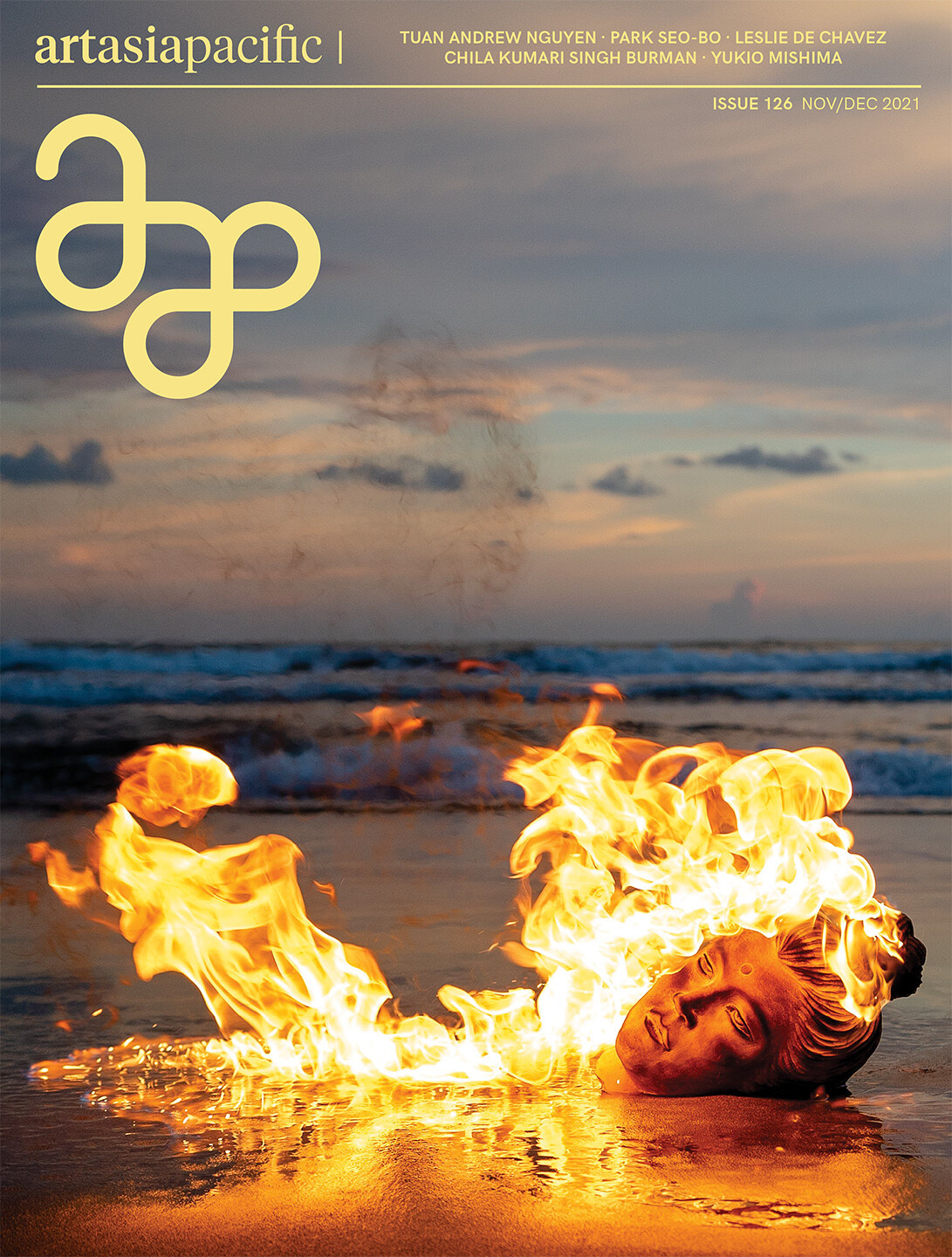In ArtAsiaPacific’s November/December issue, we look at artists who have devoted their practices to creating space for reflection, reconnection, and healing. Our cover feature is a conversation between Tuan Andrew Nguyen and associate editor Ophelia Lai about the role of voice and song in the Ho Chi Minh City-based artist’s recent film works, which center silenced histories and people, including communities linked across continents by colonizing armies and diasporas spawned by war. Aiming to encourage empathy through his practice, Nguyen explained: “I think of voice as the medium that connects us through time and space. Voice has a way of triggering memory in visceral ways and helping us process those memories. Voice is also the apparatus by which we make and share myths. And since voice is the medium connecting the spaces of memory with the present and the imaginative possibilities of the future, it possesses a transformative power.”
For the second feature, deputy editor HG Masters spoke with pioneering modernist painter Park Seo-Bo. Looking back on his career on the eve of his 90th birthday, Park explains why “Dansaekhwa” (monochrome painting) is a misnomer for the renowned Korean postwar movement that he inspired and propelled. Describing his newfound obsession with color and its healing potential, he also doles out advice about staying humble and changing with the times—lessons he learned from his greatest teacher, nature: “We believe that when we put too much focus on ourselves, it inevitably harms nature. Korean art is about emptying one’s mind, letting go of our egos, and returning to nature to coexist with it.”
Closing out the Features section is Up Close, where the editors spotlight three new works addressing claims to power and social structures: Lee Kai Chung’s Sea-sand Home (2021) installation, Bani Abidi’s photo installation The Reassuring Hand Gestures of Big Men, Small Men, All Men (2021), and Yao Qingmei’s video The Burrow (2021).
In Profiles, managing editor Chloe Chu writes about the choreographic practice of Berlin-based Choy Ka Fai, whose most recent production brings together the descendants of colonizers and formerly colonized communities in a trancedance performance. Portia Placino details the politically engaged art projects of Leslie de Chavez, who also founded Project Space Pilipinas, which runs community-focused art exhibitions in the small city of Lucban outside Metro Manila.
Though the pandemic has made survival difficult for many art businesses and spaces, in Shanghai, it has also created openings for new grassroots initiatives. In his essay, Shanghai desk editor Hutch Wilco interviews the organizers behind some of these enterprises about their strategies and motivations. The second Essay looks at the evolution of the archival turn, with a focus on “Portals, Stories, and Other Journeys,” an exhibition by Hong Kong’s Asia Art Archive at Tai Kwun Contemporary, rooted in the repository of materials compiled by artist Ha Bik Chuen.
The issue also includes The Point by artist, curator, and educator Taeyoon Choi who probes how we might address the ways our virtual realms perpetuate violence and inequity. Filing a Dispatch from Beijing, Jaime Chu expounds on how social-media metrics and Chinese internet culture have affected what gets shown in China’s art-exhibition spaces. Meanwhile, in One on One, artist Monira Al Qadiri describes her fascination with the writing of novelist Yukio Mishima, as well as a film directed by Paul Schrader about Mishima, who has long been sidelined in Japan for his homosexuality, extreme right-wing politics, and public suicide following a failed coup.
Finally, for Where I Work, contributor Tiffany Leung visited the riotous London studio of Chila Kumari Singh Burman. Through her unabashed, visually “loud” two- and three-dimensional assemblages, which pay homage to her parents and Punjabi-British heritage, Burman reminds us “that imaginative joy is entwined with subversion and resistance, and prevails through darkness into light.”
A digital edition of the full AAP 126 November/December issue is now available for purchase on Zinio, Google Play, iTunes, and Magzter.

